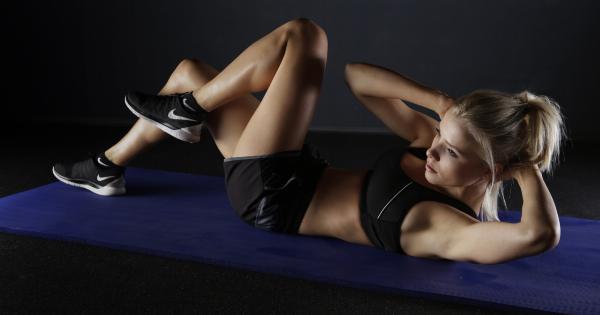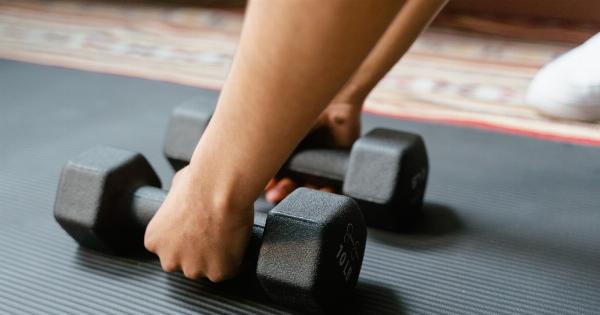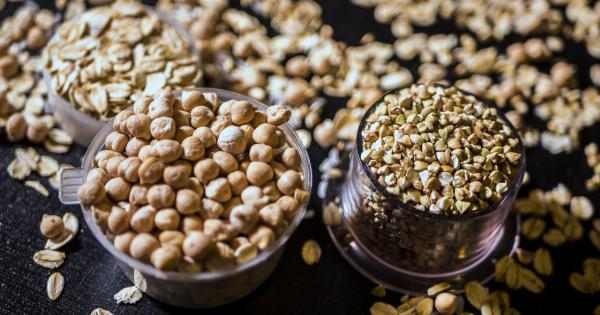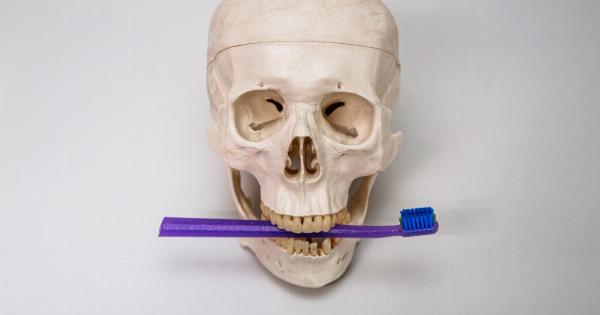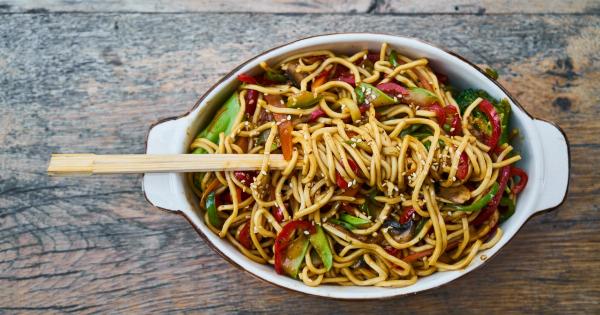Menopause is a natural phase of a woman’s life that marks the end of her reproductive years. It is a transitional period that is characterized by various physical and hormonal changes in the body.
For many women, menopause can bring about uncomfortable symptoms such as hot flashes, night sweats, mood swings, weight gain, and decreased bone density. However, incorporating regular exercise into your routine can greatly help manage these symptoms and improve your overall well-being during this transitional phase.
The Benefits of Exercise During Menopause
Regular physical activity has numerous benefits for women experiencing menopause. Here are some of the ways exercise can positively impact your health:.
1. Reduces Hot Flashes
Hot flashes are one of the most common and bothersome symptoms of menopause. However, studies have shown that engaging in regular aerobic exercise can help reduce the frequency and intensity of hot flashes.
Exercise triggers the release of endorphins, which are natural mood boosters and can help regulate body temperature.
2. Improves Mood and Mental Health
Menopause often brings about mood swings, irritability, and feelings of anxiety or depression. Exercise is known to stimulate the production of endorphins, which can improve your mood and reduce feelings of stress.
Physical activity also promotes better sleep, which is often disrupted during menopause, leading to increased overall well-being.
3. Supports Weight Management
During menopause, hormonal changes can cause weight gain, particularly around the abdomen. Engaging in regular exercise helps burn calories, build muscle mass, and boost your metabolism, making it easier to maintain a healthy weight.
Combining aerobic exercises with strength training is especially beneficial, as it helps preserve muscle mass and prevent muscle loss associated with aging.
4. Strengthens Bones
Women going through menopause have an increased risk of developing osteoporosis due to the decline in estrogen levels.
Weight-bearing exercises such as walking, running, or weightlifting help stimulate bone growth and increase bone density, reducing the risk of fractures and maintaining overall bone health.
5. Reduces the Risk of Chronic Diseases
Regular exercise during menopause can help reduce the risk of chronic conditions such as heart disease, diabetes, and certain types of cancer.
Physical activity improves cardiovascular health, lowers blood pressure, reduces cholesterol levels, and boosts insulin sensitivity.
Best Exercises for Menopause
When it comes to choosing the right exercises during menopause, it’s essential to find activities that you enjoy and that suit your fitness level. Here are some exercise options to consider:.
1. Aerobic Exercises
Aerobic exercises, also known as cardio, increase your heart rate and improve overall cardiovascular health. Brisk walking, jogging, swimming, cycling, dancing, or using the elliptical machine are all excellent options.
Aim for at least 150 minutes of moderate-intensity aerobic activity or 75 minutes of vigorous activity per week.
2. Strength Training
Strength training exercises help maintain muscle mass, increase bone density, and boost metabolism. Use dumbbells, resistance bands, or weight machines to perform exercises such as squats, lunges, push-ups, and bicep curls.
Aim for at least two strength training sessions per week, targeting all major muscle groups.
3. Yoga and Pilates
Yoga and Pilates are excellent options for improving flexibility, balance, and core strength. These exercises also promote relaxation and stress reduction, which can be beneficial during menopause.
Look for classes specifically designed for menopausal women or try online tutorials.
4. High-Intensity Interval Training (HIIT)
HIIT workouts involve alternating between short bursts of intense exercise and brief recovery periods. This type of exercise increases cardiovascular fitness, burns calories, and can be time-efficient.
However, it may not be suitable for everyone, especially those with joint or heart conditions. Consult with a fitness professional before attempting HIIT.
Staying Safe While Exercising
Before starting any new exercise program, it’s important to consult with your healthcare provider, especially if you have any underlying medical conditions or concerns. Here are some tips to keep in mind for a safe and enjoyable workout:.
1. Start Slow and Gradually Increase Intensity
If you’re new to exercise or have been inactive for a while, start with low-intensity activities and gradually increase the duration and intensity of your workouts.
This approach helps prevent injuries and allows your body to adjust to the demands of exercise.
2. Listen to Your Body
Pay attention to how your body feels during and after each workout. If you experience pain, dizziness, or shortness of breath, slow down or take a break. Pushing yourself too hard can lead to injuries or burnout.
3. Stay Hydrated
Drink plenty of water before, during, and after your workout to stay hydrated. Menopausal women may experience hot flashes or sweating, so it’s crucial to replenish fluids throughout the exercise session.
4. Wear Appropriate Clothing and Footwear
Choose breathable, moisture-wicking fabrics that help regulate body temperature and keep you comfortable during exercise. Invest in proper athletic shoes that provide support and cushioning to prevent injuries.
5. Warm-Up and Cool Down
Always start your workouts with a warm-up to prepare your muscles for activity and gradually increase your heart rate. After each session, cool down with stretches to improve flexibility and prevent muscle soreness.
Conclusion
While menopause can bring about various challenges, regular exercise offers a multitude of benefits for women during this transitional phase.
From reducing hot flashes to enhancing mood, managing weight, and improving bone health, physical activity plays a crucial role in maintaining overall well-being. Find activities you enjoy and make exercise a regular part of your routine to navigate menopause with strength and resilience.












